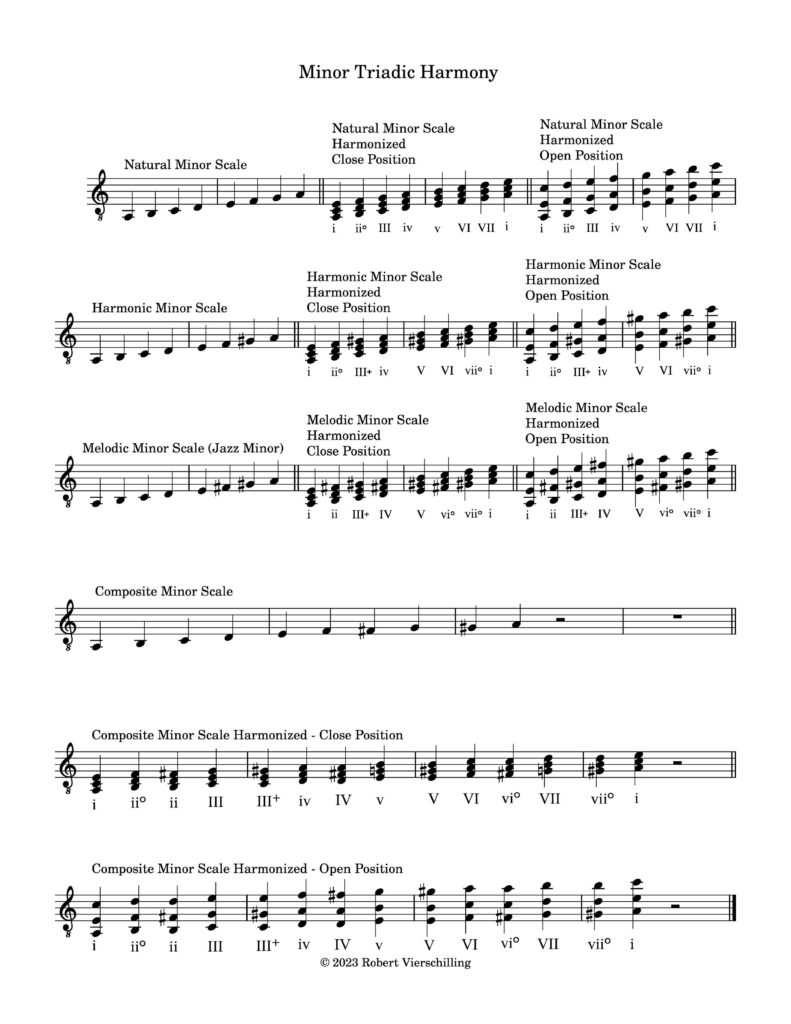There are a number of good reasons to practice scales, including minor scales. Scales can help a guitarist develop a solid instrumental technique, develop a beautiful tone, learn where notes are on the fingerboard, and understanding scales is an important foundational skill for understanding music theory. This blog post is about minor key triadic harmony, and it focuses on the wide variety of harmonic choices minor harmony offers to composers.
Any scale can be used as a starting point for building triads (three-note chords). Minor key harmony is a little complicated because there are three types of minor scales commonly referred to in music theory: natural minor, harmonic minor, and melodic minor. To complicate matters further, classical music theory and jazz music theory present the melodic minor scale differently.
While knowing all three forms of the minor scale are beneficial for instrumental practice and understanding music theory, composers rarely write entire compositions using just one form of the minor scale. Rather, composers choose freely from the notes and chords contained in all three forms of the minor scale. For this reason, composers should know the composite minor scale, and the chords built from the composite minor scale. The composite minor scale is not a useful scale for instrumental practice, however.
The page of examples begins with the natural, harmonic, and melodic minor scales. It has the melodic minor scale used by jazz guitarists, because the melodic minor scale used by classical guitarists is a combination of the melodic minor scale used by jazz guitarists and the natural minor scale. These are the minor scales that are useful for instrumental practice. The page of examples can be downloaded as a version with standard music notation only, or as a version with standard music notation and tablature.
Natural, harmonic, and melodic minor scales all begin with the same five notes, scale degrees 1, 2, flat 3, 4 and 5. They differ in which form of scale degrees 6 and 7 they use. Natural minor has flat 6 and flat 7, harmonic minor has only flat 6, and melodic minor uses the same notes for scale degrees 6 and 7 as a major scale.
The composite minor scale begins with the first five notes that all three forms of the minor scale have in common, scale degrees 1, 2, flat 3, 4 and 5. The composite minor scale then has both forms of scale degrees 6 and 7, thus making it a nine-note scale. More importantly, the composite minor scale offers the composer a total of thirteen triads, and includes major, minor, diminished, and augmented triads.
A composer can become skilled in writing music in minor keys by studying compositions in minor keys by great composers, studying music theory, and by writing a lot of music using minor harmony.

Click the button below to download a copy of Minor Key Triadic Harmony
Click the button below to download a copy of Minor Key Triadic Harmony with TAB.
